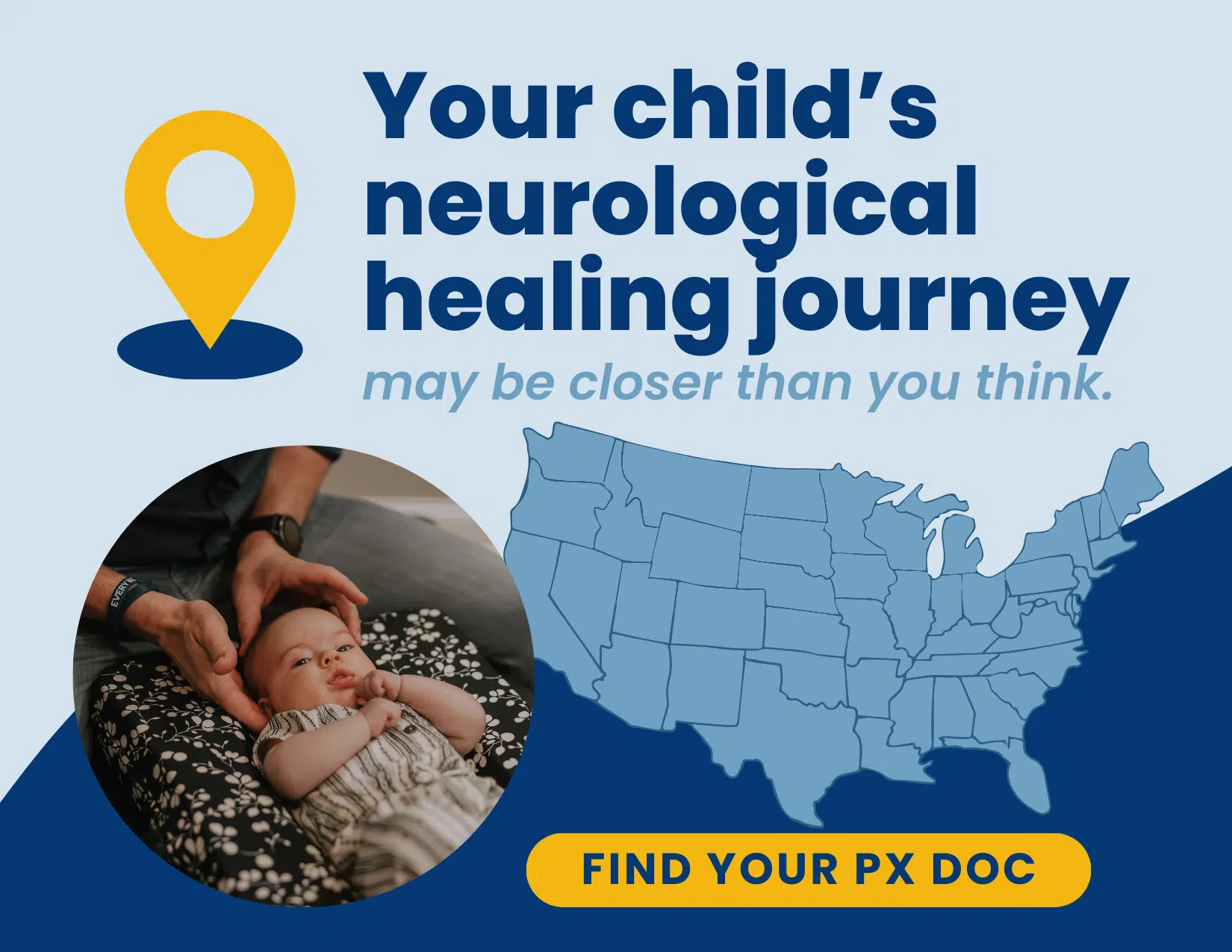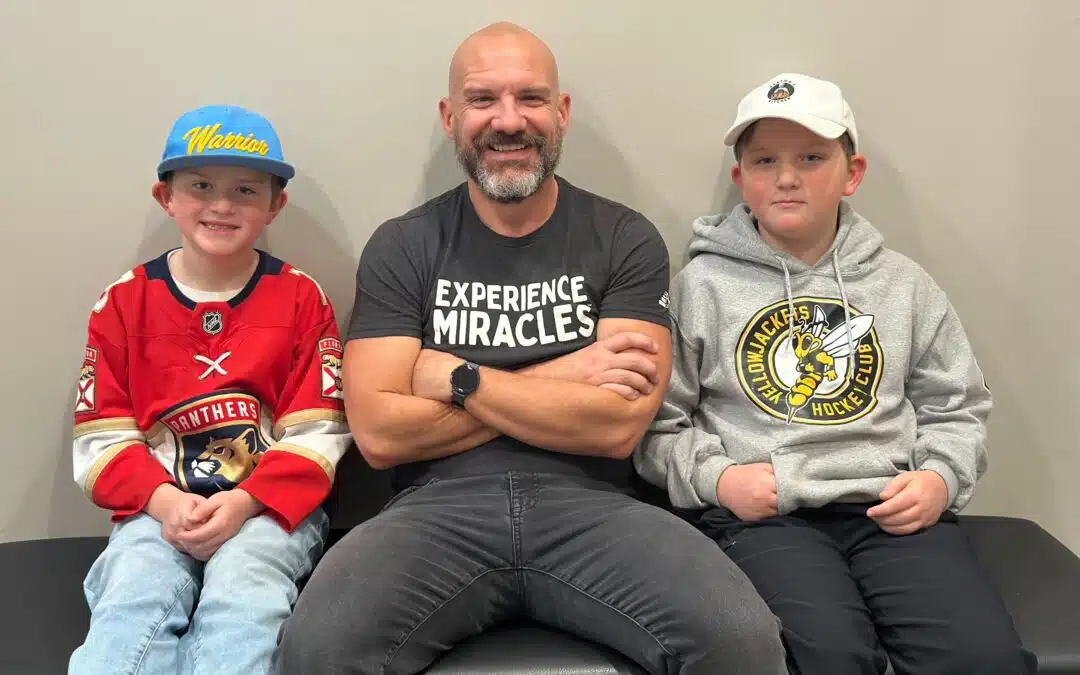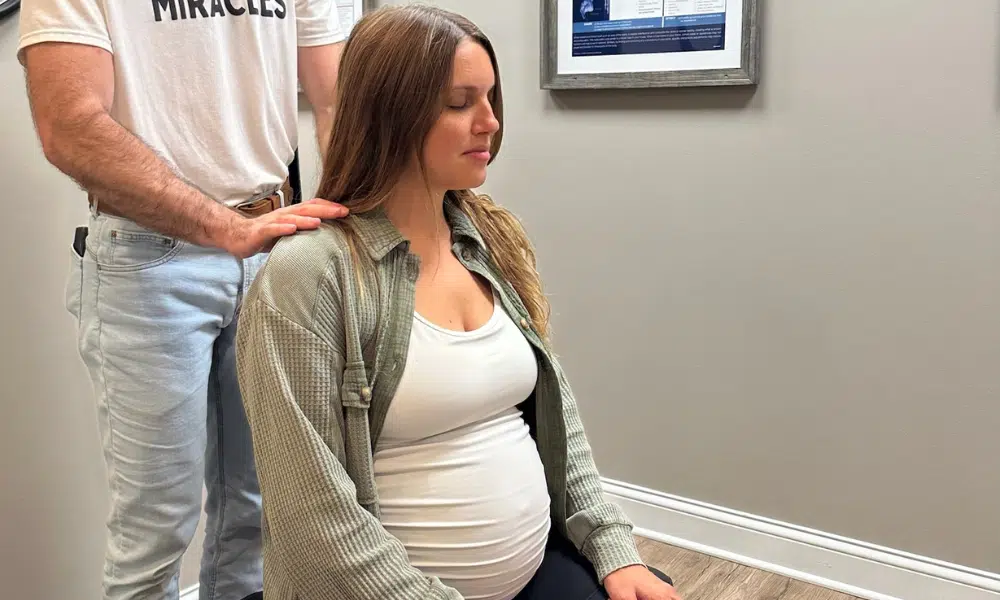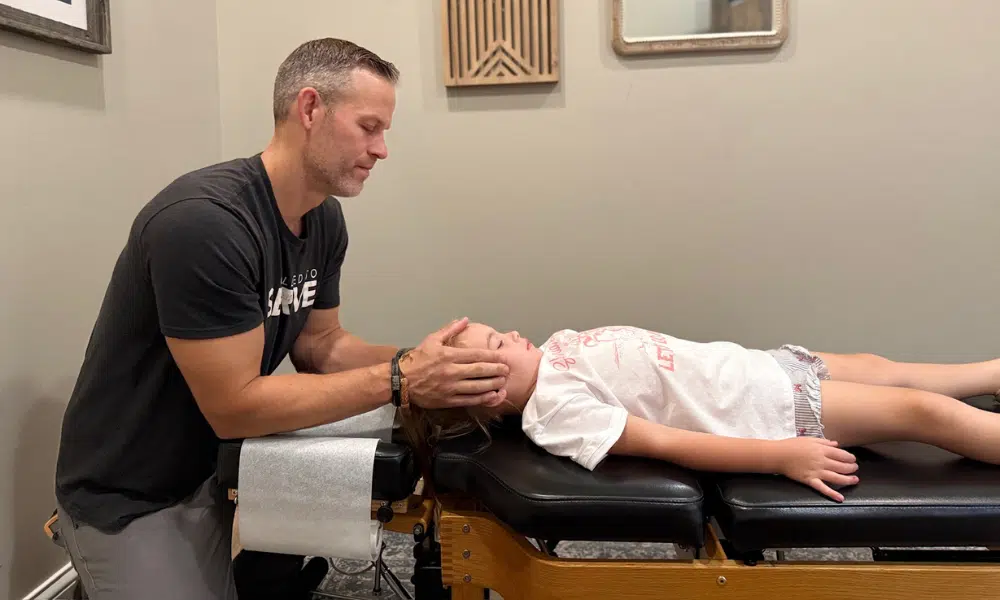Many children today struggle with sleep disturbances, digestive troubles, and sensory sensitivities, which may be due to dysfunction of the autonomic nervous system. Parents often seek answers from traditional doctors but are told that their child’s issues are normal developmental phases they will eventually outgrow, or that medication is the only solution.
Essentially, the autonomic nervous system is a network of nerves that regulates vital involuntary functions like heart rate, breathing, digestion, and stress responses. When an imbalanced system impacts a child’s physical and emotional health, the effects are noticeable.
Unfortunately, conventional medicine frequently misses or dismisses the role of autonomic dysfunction in pediatric health issues.
In this article, we will explore how the autonomic nervous system shapes your child’s well-being, the factors that can throw it out of balance, and how a cutting-edge approach called Neurologically-Focused Chiropractic Care is transforming the way we understand and address the root causes of many of childhood health disorders.
The Autonomic Nervous System
Understanding how the autonomic nervous system works is crucial to ensuring your child’s well-being. This system is responsible for involuntary body functions, such as regulating vital nervous system processes. Essentially, it acts as a master regulator of the body, controlling involuntary functions like:
- Heart rate
- Blood pressure
- Breathing
- Digestion
- Body temperature
- Stress responses
This system operates below conscious awareness, working behind the scenes to maintain homeostasis—the state of internal balance and stability that allows the body to function optimally.
The autonomic nervous system consists of three main branches:
- Sympathetic Nervous System: Often referred to as the “fight or flight” response, this branch activates during times of stress or perceived threat. It prepares the body for action by increasing heart rate, blood pressure, and blood flow to the muscles while slowing digestion.
- Parasympathetic Nervous System: Known as the “rest and digest” response, this branch promotes relaxation, conserves energy, and facilitates bodily functions such as digestion, urination, and salivation.
- Enteric Nervous System: This lesser-known branch, sometimes called the “second brain,” governs the gastrointestinal tract, controlling functions like peristalsis, secretion, and absorption.
Autonomic Dysfunction: Understanding Dysautonomia
Under ideal conditions, the sympathetic and parasympathetic branches work together in a delicate balance, with the sympathetic system activating when needed and the parasympathetic system restoring calm and balance afterward.
However, in our modern world filled with chronic stressors, this balance can be disrupted, leading to a state of autonomic dysfunction, otherwise known as dysautonomia.
Two key neurotransmitters facilitate communication within the autonomic nervous system:
- Acetylcholine: The primary neurotransmitter of the parasympathetic nervous system, promoting “rest and digest” functions.
- Norepinephrine: The primary neurotransmitter of the sympathetic nervous system, preparing the body for “fight or flight.”
Imbalances in these neurotransmitters can contribute to autonomic nervous system dysfunction, which can have far-reaching effects on your child’s physical, mental, and emotional well-being.
“The Perfect Storm” of Dysautonomia
With dysautonomia on the rise among children, PX Docs has noticed a pattern of factors that contribute to the development of dysfunction in the autonomic nervous system. We refer to this convergence of stressors as “The Perfect Storm.”
“The Perfect Storm” typically begins during pregnancy, when maternal stress can have a lasting impact on the developing nervous system of the unborn child. Chronic stress, anxiety, and trauma experienced by the mother can alter the in-utero environment, exposing the fetus to elevated levels of stress hormones that can shape the developing psychiatric and nervous system.
This phenomenon has the potential to intensify during the birth process, particularly when interventions such as c-sections, forceps, or vacuum extraction are used. These interventions can cause physical trauma to the delicate tissues of the head, neck, and spinal cord, leading to misalignments and tension in the nervous system, known as subluxations.
Brain and Body Disruption: Understanding Subluxation
Subluxations are areas of dysfunction in the nervous system where normal communication between the brain and body is disrupted. When subluxations occur in the upper neck and brainstem region, they can have a particularly profound impact on the function of the autonomic nervous system, as this area is rich in autonomic nerve fibers and plays a crucial role in regulating vital functions.
In the early years of life, additional stressors can compound the effects of subluxation and autonomic dysfunction. These may include:
- Poor sleep
- Nutrient deficiencies
- Environmental toxins
- Physical or emotional trauma
- Chronic illnesses or infections
Over time, the cumulative impact of these stressors can push the autonomic nervous system further out of balance, leading to sympathetic dominance or “fight or flight” activation. In this state, the body’s normal self-regulation and healing capacities are compromised, setting the stage for various health challenges.
By understanding “The Perfect Storm” and the role of subluxation in autonomic dysfunction, parents can begin to see their child’s health challenges in a new light — not as a collection of disconnected signals but as the result of a common underlying cause.
The Far-Reaching Consequences of Autonomic Dysfunction
Dysautonomia can manifest in various ways that affect multiple systems in the body.
Some of the most common traits of dysautonomia include:
- Chronic fatigue
- Dizziness or lightheadedness
- Rapid or slow heart rate
- Digestive issues (constipation, diarrhea, abdominal pain)
- Sleep disturbances
- Mood swings and emotional dysregulation
- Difficulty regulating body temperature
- Frequent urination or urinary retention
- Sensory sensitivities (to light, sound, touch, or taste)
These issues can significantly impact a child’s quality of life, making it difficult for them to engage in daily activities, learn and thrive in school, and form healthy social connections.
Moreover, autonomic dysfunction has been implicated in the development or exacerbation of several childhood health conditions, such as:
- Sensory Processing Disorder: Children with sensory processing issues often have difficulty regulating their responses to sensory input, leading to either over- or under-responsiveness. This can manifest as extreme sensitivity to certain textures, sounds, or lights or a craving for intense sensory experiences.
- Autism Spectrum Disorder: Many children on the autism spectrum struggle with autonomic regulation, which can contribute to challenges with social interaction, communication, and behavior.
- Anxiety and Mood Challenges: The chronic “fight or flight” state associated with autonomic dysfunction can fuel anxiety, depression, and other mood disorders in children.
- Digestive Issues: Autonomic imbalances can disrupt normal digestive function, leading to constipation, diarrhea, reflux, and abdominal pain.
- Respiratory and Immune System Challenges: Dysautonomia can affect the regulation of breathing and immune function, increasing the risk of respiratory issues and immune dysfunction.
While traditional medical approaches may provide symptomatic relief for some of these conditions, they often fail to address the underlying autonomic dysfunction that is contributing to the child’s health challenges. Medications can mask symptoms but do not promote the restoration of healthy autonomic balance and function.
In fact, traditional medicine frequently overlooks the interrelationship among seemingly disconnected conditions, treating them as separate problems instead of signs of a shared underlying issue.
This fragmented approach can result in a pattern of managing symptoms and experimenting with medications that do not offer long-term relief or genuine healing.
Neurologically-Focused Chiropractic Care
At PX Docs, we approach healing for children struggling with autonomic dysfunction by addressing the root cause of their challenges through Neurologically-Focused Chiropractic Care.
We understand that the autonomic nervous system is profoundly influenced by the health and function of the nervous system, particularly the central nervous system and the vagus nerve. We aim to identify and correct subluxation patterns through advanced assessment tools and precise chiropractic adjustments.
One of the key tools we use in this process is the neurological INSiGHT Scan. This non-invasive, cutting-edge technology allows us to detect, quantify, and target specific areas of nervous system dysfunction with incredible precision. The INSiGHT Scan provides us with detailed information about your child’s nervous system, including:
- Areas of subluxation or dysfunction in the nervous system
- Patterns of autonomic imbalance (sympathetic vs. parasympathetic dominance)
- Stress response patterns and adaptability
- Vagal nerve function and tone
With this information, we can build a personalized care plan for your child, focusing on the specific areas of their nervous system that require help. Our approach involves chiropractic adjustments tailored to address neurological issues, such as improper alignment, tension, and communication within the nervous system.
As we do this, many parents report seeing profound shifts in their child’s health and well-being, including:
- Improved sleep and more restful nights
- Better digestion and less tummy troubles
- More balanced and resilient emotional regulation
- Increased focus and learning capacity
- Stronger immune function and fewer illnesses
- Overall, greater vitality and zest for life
Neurologically-Focused Chiropractic Care addresses the root cause of autonomic dysfunction in children by restoring the body’s innate capacity for self-healing, balance, and resilience.
Partnering with PX Docs for Your Child’s Health
Dysautonomia and its associated issues should not define a child’s future or negatively impact family dynamics. Proper neurological care allows a child’s autonomic nervous system to regain function and progress toward optimal health and happiness.
Addressing the root cause is more effective than adopting conventional medicine’s “wait and watch” approach. Even if you’ve tried many holistic or alternative medical approaches, subluxation and dysautonomia could be limiting your child’s ability to experience optimal results.
If you are looking for a drug-free pediatric provider near you, visit the PX Docs Directory to find the closest one.





